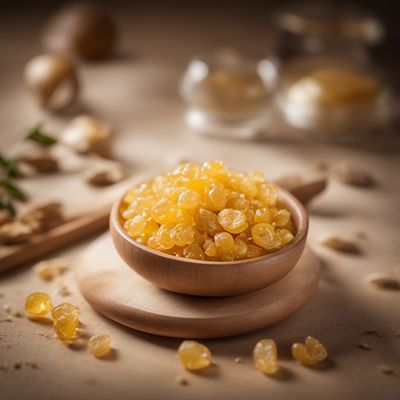
Ingredient
Tusk
"The Ivory of the Sea: Exploring the Delicate Flavor of Tusk"
Tusk is a deep-sea fish that belongs to the cod family. It has a long, slender body with a silver-gray color and a distinctive large mouth. The flesh of tusk is firm and white, with a delicate flavor that is often compared to cod or haddock. Its texture is slightly flaky yet tender, making it suitable for a wide range of cooking methods such as baking, grilling, or pan-frying. Tusk is prized for its versatility and ability to absorb flavors, making it a favorite among chefs and home cooks alike.
Origins and history
Tusk is native to the cold waters of the North Atlantic Ocean, particularly found in regions such as Norway, Iceland, and the United Kingdom. It has a long history of being a staple food in these coastal areas, where it has been traditionally caught and consumed for centuries. Tusk has also gained popularity in other parts of the world due to its mild flavor and versatility in various cuisines.
Nutritional information
Tusk is a nutritious ingredient, rich in high-quality protein, omega-3 fatty acids, and essential minerals such as selenium and phosphorus. It is also relatively low in calories, making it a healthy choice for those watching their weight or looking to incorporate more seafood into their diet.
Allergens
Tusk is a type of fish and may pose a risk of allergenic reactions in individuals with fish allergies.
How to select
When selecting tusk, look for fillets or whole fish that have a firm texture and a fresh, mild aroma. The flesh should be translucent and free from any discoloration or strong fishy odor. If purchasing from a fish market or supermarket, ensure that the fish is properly stored on ice or refrigerated to maintain its freshness.
Storage recommendations
To maintain the freshness and quality of tusk, it is best to store it in the refrigerator at a temperature of 32-39°F (0-4°C). If purchased whole, it is recommended to clean and fillet the fish before storing. Tusk can be stored for up to 2-3 days in the refrigerator, but it is best consumed as soon as possible for optimal flavor and texture.
How to produce
Tusk is typically caught in the wild by professional fishermen using specialized fishing techniques. It is not commonly produced through aquaculture or fish farming.
Preparation tips
Tusk can be prepared in various ways, such as baking, grilling, pan-frying, or poaching. It is important not to overcook tusk, as it can become dry and lose its delicate texture. Season the fish with herbs, spices, or citrus flavors to enhance its natural taste. Tusk is often used in dishes such as fish stews, fish cakes, or simply served with a squeeze of lemon and a side of vegetables.
Substitutions
If tusk is not available, suitable substitutes include cod, haddock, or pollock, which offer similar flavors and textures.
Culinary uses
Tusk is commonly used in a variety of dishes, including fish soups, chowders, fish pies, or fish and chips. Its delicate flavor and firm texture make it a versatile ingredient that can be incorporated into both traditional and modern seafood recipes.
Availability
Tusk is commonly available in regions such as Norway, Iceland, the United Kingdom, and other North Atlantic coastal areas. It may also be found in some specialty seafood markets or imported to other countries.
More ingredients from this category

Hakes
The Versatile Hake

Alaska pollock
The Versatile Delight: Alaska Pollock

Blue whitings
The Ocean's Silver Delight

Grenadiers
Exquisite Ocean Gems

Cod
The Versatile Delight

Ling
The Delicate Delight

Pollack, pollock
Versatile White Fish

Haddock
The Versatile White Fish

Norway pout
The Silvery Delight: Exploring the Culinary Wonders of Norway Pout

Whiting
The Delicate White Fish